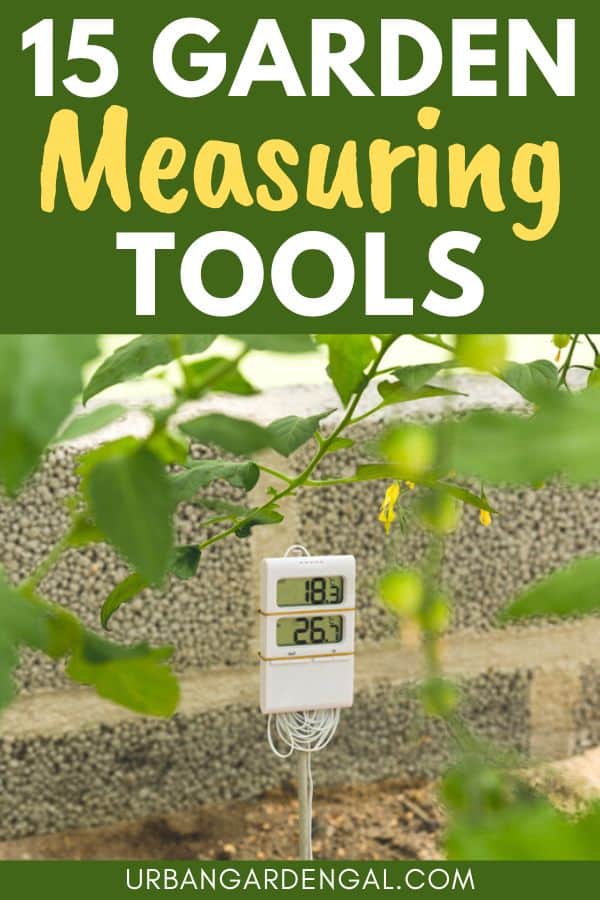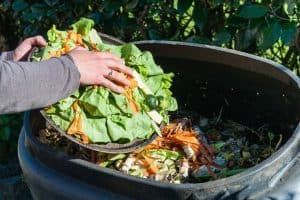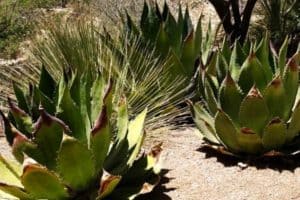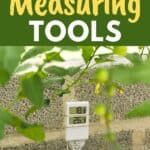Gardening is a rewarding and enjoyable activity, and having the right measuring tools can make your work much easier and more precise.
From creating symmetric garden designs to spacing your plants and trees, these tools are indispensable for both amateur and professional gardeners.
In this guide, I’ve listed 15 handy measuring tools to help you in the garden.
This post contains affiliate links. Please read the disclosure for more info.
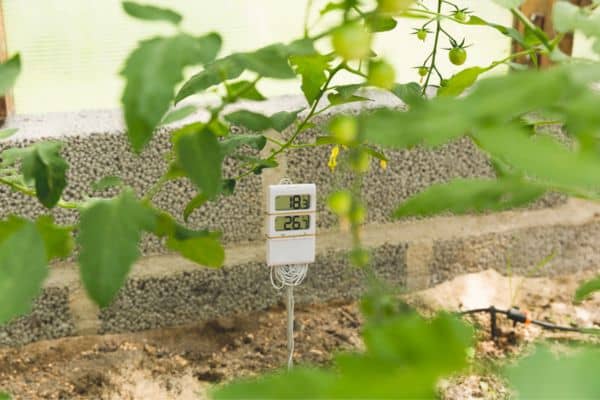
15 Garden Measuring Tools
1. Laser Measuring Tool
As a landscape gardener, I’ve found that using a laser measuring tool is a game-changer when it comes to designing and planning outdoor spaces.
With a laser measuring tool, you can quickly and accurately measure distances, heights, and angles, so it’s easier to plan and visualize your garden design.
They work by emitting a laser beam that bounces off a surface and returns to the tool, which allows it to calculate the distance or area.
Laser measuring tools are available in different types, including small handheld devices or stationary devices that can be mounted on a tripod.
To use a laser measuring tool, point it at the surface you want to measure and read the distance on the display.
2. Tape Measure
A tape measure is the perfect tool for measuring large distances by hand.
You can use a tape measure to measure the width and length of a garden bed or pathway, as well as larger structures like decks or sheds.
3. Measuring Wheel
A measuring wheel is a convenient tool for measuring long distances in your garden.
Measuring wheels have a wheel that rolls along the ground and a counter that tracks the distance travelled.
Walk the wheel across the area you’re measuring, and it records the distance as you go.
This makes it easy to measure the length of a garden bed, the distance between trees, or the area of a lawn or garden.
Measuring wheels can also be used to help calculate the amount of mulch or other materials needed for a specific area.
4. Calipers
Calipers are a precise measuring tool that are handy for measuring small dimensions such as the thickness of a plant stem or branch.
Vernier calipers have a sliding scale that allows you to read the measurement, while digital calipers display the measurement on a screen.
To use calipers for garden measurements, place the jaws around the object you want to measure and read the measurement on the scale or screen.
5. String Line
A string line is a simple and inexpensive tool for garden measurements.
It can be used to create straight lines for planting, edging, and laying paving stones.
To use a string line, tie a string to two stakes and stretch it taut between them.
You can then use the string as a guide for planting rows of seeds or bulbs, or for creating straight edges for garden beds or walkways.
You can also use string lines to mark out squares for square foot gardening.
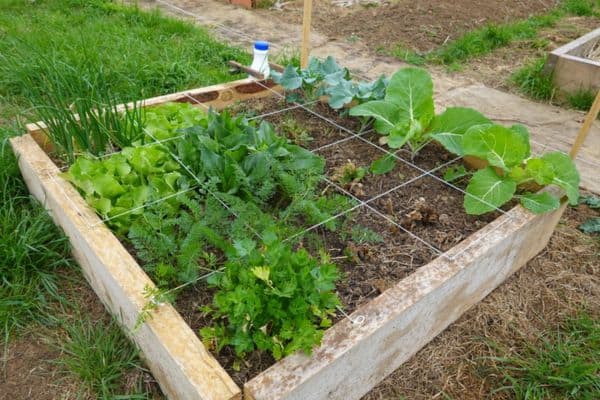
6. Moisture Meter
A soil moisture meter is a handy tool to help you determine the moisture content of your soil, so you know exactly when to water your plants.
Soil moisture meters use conductivity to test the moisture in the soil.
To use a moisture meter, insert the probe into the soil and read the moisture level on the gauge.
Soil moisture meters are particularly useful for plants that are sensitive to overwatering, so they can help to prevent root rot.
7. Spirit Level
A spirit level is a useful tool that can help to ensure that your garden features are level and straight.
You can use a spirit level to ensure that decks, fences, and retaining walls are straight, or to level the soil before laying pavers.
To use a spirit level, place it on the surface you want to measure and adjust it until the bubble is centered in the vial.
Spirit levels are available in different sizes and shapes, including handheld levels and longer levels for larger projects.
8. pH Meter
A soil pH meter can help you measure the acidity or alkalinity of your soil.
It’s helpful to know the pH of your soil so you can make sure that your plants are getting the right nutrients and you can adjust the pH level to improve plant growth.
To use a soil pH meter, insert the probe into the soil and read the pH level on the gauge.
Penn State Extension recommends testing the soil before you start planting because once the landscape is planted, it is more difficult to make significant changes to the soil.
Soil pH meters are particularly useful for plants that have specific pH requirements, such as blueberries or azaleas.
9. Seed Spacing Tool
A seed spacing tool is can help to ensure that your seeds are planted the correct distance apart.
This can help to avoid overcrowding and ensure that each plant has enough space to grow and thrive.
To use a seed spacing tool, place it on the soil and use the markings or holes to guide the placement of the seeds.
Seed spacing tools are particularly useful for planting rows of seeds or for planting in raised beds or containers.
10. Seed Depth Measuring Tool
A seed depth measuring tool is a useful tool to ensure that your seeds are planted at the correct depth.
It can help you avoid planting seeds too deep or too shallow, which can affect germination and plant growth.
11. Rain Gauge
A rain gauge can help to measure the amount of rainfall in your garden.
Checking your rain gauge regularly can help you determine whether your plants are receiving enough water and whether you need to supplement with additional watering.
Rain gauges are available in different types, including plastic or glass gauges with markings or digital gauges with sensors.
To use a rain gauge, place it in an open area away from trees and measure the amount of rainfall that collects in the gauge.
12. Wind Gauge
A wind gauge is a useful tool to measure the speed and direction of wind in your garden.
Wind gauges are available in different types, including handheld anemometers or stationary gauges with vanes or cups.
To use a wind gauge, place it in an open area in your garden to measure the speed and direction of the wind. [1]
You can then use this information to adjust your gardening practices, such as staking taller plants or adding windbreaks to protect your garden.
13. Humidity Meter
A humidity meter, or hygrometer, measures the moisture content in the air.
This information can be helpful for adjusting your watering routine and preventing plant diseases related to excessive humidity.
Humidity meters are also helpful if you have indoor plants, to ensure that your plants are not getting too dry.
If the air isn’t humid enough you can buy an inexpensive humidifier to keep your houseplants happy.
14. Light Meter
With a light meter, you can measure the intensity of light in your garden.
This data can help you choose the appropriate plants for your garden’s lighting conditions or adjust the placement of your existing plants for better growth.
15. Marking Paint
The last garden measuring tool on this list is marking paint, also called spray chalk.
Marking your garden helps you to visualize a new garden bed, path or pond location before you start digging.
To use marking paint, shake the can and hold it about 6 inches (15 cm) away from the area you want to mark and spray in a continuous line.
RELATED ARTICLES
- How To Use Yogurt In The Garden
- 10 Small Vegetable Garden Ideas
- How Long Do Potatoes Take To Grow
- 10 Fast Growing Flower Seeds
- How To Create A Vertical Plant Wall
So there are 15 tools to help measure and monitor your garden.
By using these tools, you can enhance your gardening experience and make informed decisions about plant placement, watering, and overall garden management.
Are you on Pinterest? I have boards dedicated to Urban Gardens and Gardening Tips that you may enjoy. You can also find me on Facebook.















